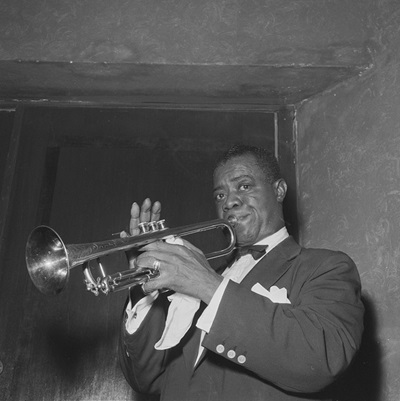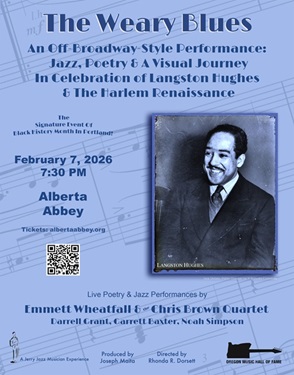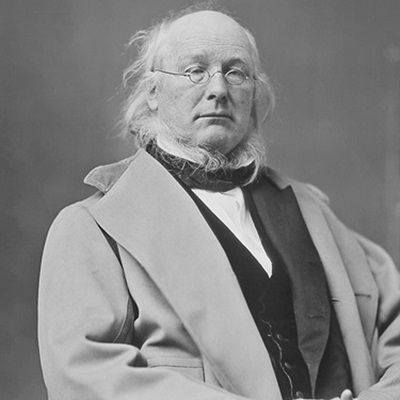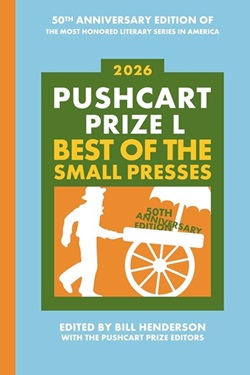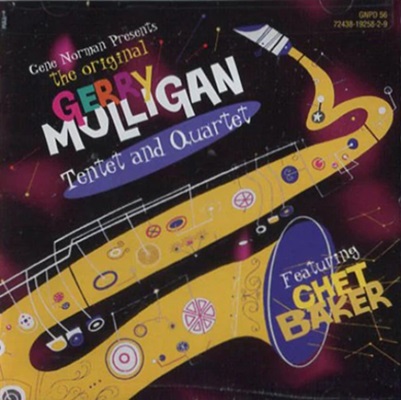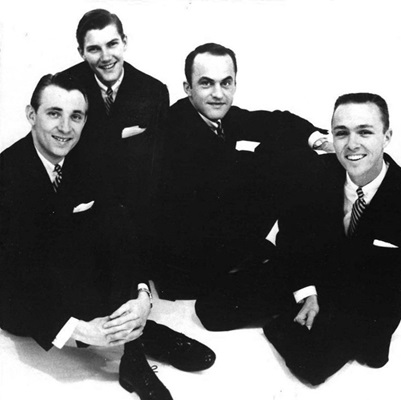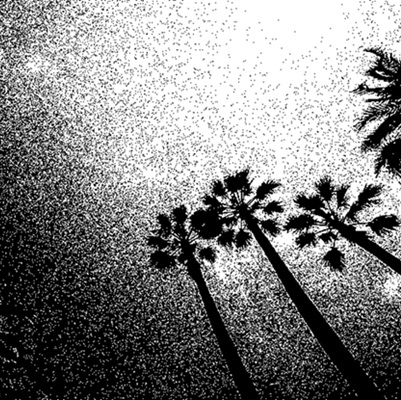Book Review
Weather Bird: Jazz at the Dawn of its Second Century
by
Gary Giddins
__________
A book review by Paul Morris, with excerpts following
*
The world of jazz criticism is enriched every time Gary Giddins brings out a new book, and Weather Bird: Jazz at the Dawn of its Second Century, bulges with riches. The collection is mostly drawn from his recently-ended Village Voice column (also called “Weather Bird”), with the addition of significant essays published elsewhere. Even faithful readers of the Voice will find ample new Giddins material here.
A wide-ranging intelligence, an enthusiasm for the spirit of American culture, an attention to musical detail — the characteristics that have made him our leading jazz critic are here in abundance. His knowledge of jazz of all styles is on display here, with penetrating articles on Louis Armstrong, Mildred Bailey, and Eddie Condon arrayed beside reviews of Cecil Taylor, Jason Moran and Dave Douglas. There is no period or style in the first century of jazz that he does not expertly examine, excepting the dead end that was fusion and its spawn, “smooth jazz.”
There are major essays on Erroll Garner, Benny Carter, Dave Brubeck, Ornette Coleman, and Sonny Rollins. Lesser-known artists such as Martial Solal, Ted Nash, Jaki Byard and the Boswell Sisters benefit from his careful listening and lively descriptions. Here, in a review of a Teddy Wilson set, is an example of the balance Giddins strikes between musicology and impressionistic criticism: “Headily percussive, he refined the stride approach into patterns of free-ranging tenths, producing an unmistakable, belling attack of great beauty and sophistication; harmonically progressive, he alternated exquisite melodic inversions with delirious flights of reclusive abandon.”
At the Voice he reviewed the JVC (formerly Newport) Jazz Festival each summer, and these pieces are included. Each generation in jazz must have known the feeling elicited by reading about the concerts of the early nineties: “Then There Were Giants,” e.g. Gerry Mulligan, Elvin Jones, Al Gray. Slotted between the annual JVC pieces are the end-of-the-year wrap-ups and best-recordings lists that readers eagerly anticipated each January. Those who wish to update their CD shopping lists can mine these pages for numerous jazz gems.
Particularly fascinating to a longtime Giddins reader is his introduction, in which he recounts his early musical enthusiasms. As a youngster he first listened avidly to Bach and Mozart, then to rock and roll of the Little Richard-Buddy Holly years. By the time he picked up his first Armstrong recording, music was an important part of his life. When he found to his astonishment that “Basin Street Blues” delivered the same emotional impact as Bach’s Mass in B Minor, “ everything had changed. The world was not as it seemed, genius was not confined to the realm of marble busts and high-school music rooms.”
At the end of Weather Bird is an intriguing essay, “How Come Jazz Isn’t Dead?” that describes what he terms “Music’s Four Stations” — the stages through which a musical idiom passes. From its early “native” period to its flowering in the “sovereign” stage, he says, jazz passed through a “recessionary” stage before settling into what he calls the “classical” period of our time.
Among other non-Voice writings are an introduction to Eddie Condon’s book We Called It Music, an appreciation of Irving Berlin from the Atlantic, and finely crafted essays that appeared in Sony box sets devoted to Armstrong and Billie Holiday. It’s a shame that other album notes are missing, such as his outstanding piece on the Modern Jazz Quartet (written for the box set titled 40) and the notes for The Complete Galaxy Recordings of Art Pepper.
Weather Bird is a volume you can dip into with pleasure for a long time. It’s almost a fair recompense for the loss of Giddins’s column in the Voice.
_________________________________
Editors Note: All excerpts are from the first paragraph or two of each essay
Eddie Condon was a vigorous jazz activist whose barbed tongue and stubborn beliefs were powerful implements for spreading the jazz gospel as he interpreted it. Decades after his death, in 1973, the kind of music he championed was still widely known as Condon-style, though, inevitably, the prophet and his music receded into memory when the last practitioners passed on. They merit our respect all the same. Condon and the success he enjoyed recall a tremulous period in jazz history, when the racial divide was first breached and the very act of playing jazz or representing oneself as a jazz musician conveyed the thrill of anarchy. The suspicion of outlawry was real in the United States, where Ladies Home Journalblamed jazz for an increase in rape, and severe in the Soviet Union, where playing it was a criminal offense. Condon’s career could hardly have been more unorthodox.
Though not an important instrumentalist or bandleader, Condon performed on many fine — even important — recordings and fronted countless bands. His accomplishments as a composer were few, yet he helped to codify an enduring school of jazz. He was a radical in his youth and a reactionary ever after, yet he won a lasting respect as one of jazz’s most effective propagandists, heralding America’s brave new music on the bandstand and off, as a musician, organizer, memoirist, broadcast personality, newspaper columnist, and club owner.
_____
– From We Called It Music, Da Capo Press, 1986, revised 1991
Jazz sets that are strings of solos are tedious, except when they aren’t. Jazz originals lack distinction, except when they don’t. Hard bop is glaring and rigid, except when it isn’t. In other words, all the axioms apply to the second rate, merely. When the giants come to town, all the conjectures about what makes so much jazz club action a deadening thing disappear. For those who remember all the years when you couldn’t hear Jackie McLean at the Village Vanguard, years when he focused his attention on teaching, his appearances there now are simply too precious to miss. Last visit, he presented the final appearance of the quintet that included pianist Hotep Idris Galeta, and was made especially memorable by McLean’s searing version of a Burt Bacharach tune, “A House Is Not a Home.” A year and a half later, his music is someplace else entirely. But not really. Mastery is its own home and God bless the child that’s got one.
McLean’s primary home is his pitch, a curiously individual way of bending the tempered scale so that his every note is an expression of personality and vision. It’s an adroit yet implacable force, directed at some elusively personal microtone left of center, and contiguous with a rhythmic sense that, with equal individuality, instinctively drags on the beat. The result is a shrewd and sensuous attack, as compelling as that of any vocalist, drawing you in and demanding attention with efficient ideas delivered as confidently as hammer blows. McLean’s music is profoundly communicable; his musical posture — in his compositions as well as his improvisations — establishes a broad and overpowering mood. The job of his musicians is to augment his mood, delving into scales as he does, and writing music that elaborates his perspective
_____
– From the Village Voice, December 22, 1992
Longer than Don Giovanni, Aida, or the combined playing time of Ellington’s Black, Brown and Beige, Max Roach’s We Insist! Freedom Now Suite, and Hannibal Peterson’s African Portraits, Wynton Marsalis’s Blood on the Fields, an oratorio that — like the latter three works — takes as its subject the African American slave experience, is, in short, long. The first question posed by a three-hour piece must be: Does it justify its length? Beethoven, attacked for self-indulgence in his Third Symphony, doubled the duration in his Ninth; time may tilt the scales for Marsalis as well. But the audience for the February 24 Lincoln Center Jazz Orchestra performance was unwilling to wait; some two-thirds of the sold-out house rose to its feet (“feet in the butt,” the work proclaims, “beget recognition”) and fled, greater clumps scurrying with each ensuing episode. Marsalis anticipated that response in an unusual opening plea for the house to stick. “It gets there,” he pledged. I was reminded of the screening of Otto Preminger’s Exodusduring which Mort Sahl rose and petitioned the director, “Otto, let my people go!”
As a concert work, Blood on the Fields is an exercise in unqualified hubris, a discursive pastiche in which a broad range of influences is welded but not integrated, ingested but not digested. In substituting ambition for discipline, it underscores its composer’s most glaring weaknesses — inability to configure a melody, clumsy, didactic rhetoric, emotional coldness that arms itself against sentimentality with self-conscious cleverness. Marsalis, as In This House, on This Morning made arduously clear, lacks an internal editor. Nor does he have colleagues or friends to tell him that bigger isn’t better, that it is no shame to hire a librettist, that he can’t walk on water
_____
– From the Village Voice, July 1, 1997
Joe Morris, the 42-year-old New Haven-born guitarist, is nothing if not original — he plays his weathered, compact black Gibson like an obsessive who can’t be bothered with what fellow guitarists do. But his originality stems in part from the unlikeliness of his inspirations. He doesn’t play generic guitar music, having adapted precepts, concepts, and even phrases from musicians who play piano, saxophone, and other instruments. This sort of thing is not unusual in jazz. Roy Eldridge sounded like no other trumpet player of the 1930s, because he siphoned many of his ideas from saxophonists, teaching himself to play as fast as they, but with the trumpet’s special brilliance and range. Morris has gone to the avant-garde well to test the brink of improvisational reason, but at the same time developed a quintessential jazz-guitar tone, dark and dulcet, its vibrato squarely modulated and inimical to sonic overkill. If Ornette Coleman were Jim Hall he would be Joe Morris.
_____
– From the Village Voice, November 11, 1997
For their last set in the short-lived Minetta Lane Theater series some weeks ago, D.D. Jackson and James Carter elected to make the most of their capacity for bravura exuberance. Carter’s gleaming metallic sound on reeds and Jackson’s heavy-lifting keyboard attack resonated in episodes that were by turns sensational and showy, even ersatz, and you wished they would cool down, dim down the ecstasy a little, find an amenable backbeat, groove on the changes. Yet in the end, alienation was allayed during a modishly anarchistic “I Got Rhythm,” which commenced with expansive allusions to “Battle Hymn of the Republic” (Red Nichols would have passed out if not away), “The Marine’s Hymn,” and other lockstep ditties. Grooving primarily on themselves, they made technique for its own sake its own reward, and you found yourself laughing encouragingly at the pleasure — the old homo ludens — they took in exchanging phrases, solitary pitches, squeaks and clusters, staccato bullets, rattling eruptions, and copious digressions, not least a sort of Crime Doesn’t Pay police show anthem.
Admittedly, much free jazz, in its happy mood as opposed to its throes of emotional disgorgement, is little more than chronic back-and-forth, reflexive echoes in place of meditative conversation. But rarely is it ventilated with the confidence of musicians who can, on the dime, finesse chaos, their solutions no less elegant than those of musicians likely to scowl at the commotion. Jackson and Carter belong to a growing generation of players who have gone past the ability to work inside and outside, a double-gatedness that not too long ago practically defined pomo jazz virtuosity. Apparently, they don’t even think in those terms. Everything is grist for the mill — they are the best possible repudiation of those who want to divide jazz against itself with loyalty oaths to the proprieties. You may not like what they play, but you’d be hard-pressed to argue that they can’t play.
_____
– From the Village Voice, December 9, 1997
Lea was two months old the first time we took her to a concert — Jaki Byard’s 1989 recital at Weill Hall. He sat at the piano and played a 10-note discord. She whimpered and looked distressed. But he followed instantly with a lambent stride passage. She raised her head, smiled, then fell into an hour’s sleep. I knew the feeling. Jaki never put me to sleep, but he always made me smile and frequently knocked me out. Listening to him was like turning on a tap in which all the strains of modern piano, from James P. Johnson to Cecil Taylor, flowed in one luscious rush. Yet having described the most obvious aspect of his playing, I feel obliged to backpedal from the old saw that his music stood for no more than a promethean eclecticism. His style was his own and unmistakable, by turns hard, percussive, witty, sentimental, sardonic, whimsical, subversive, ebullient, anguished. Like Sonny Rollins, he could fake you out – making you think, for example, that those corny arpeggios weren’t a joke, so that you didn’t know whether to feel embarrassed or grateful at the emotions he extracted from them.
_____
– From the Village Voice, March 16, 1999
Early one morning, listening to Sun Ra’s recently restored Pathways to Unknown Worlds, I became preoccupied with the grainy glissandi that bassist Ronnie Boykins was bowing, rifflike, against a cluttered rhythm and pointillistic wind-playing. Then the phone rang and I hit pause; the music stopped, but Boykins kept at it. What Saturnal sorcery was this? Turned out it wasn’t Boykins at all, but a carpenter on the roof laboring with some kind of drill. In fact, a lot of effects that I had been admiring came from him and other workmen who fused so beautifully with Sun Ra’s Arkestra that I had to turn the volume up to sort out who was doing what.
A Cageian moment, and long live indeterminacy. Nearly two minutes into “Cosmo-Media,” the fourth track on the same album, Sun Ra uses his Moog to sound more like a drill than the drill. Long live serendipity, too. The 1986 Coney Island concert by Sun Ra and John Cage failed utterly, musically and even symbolically, because Ra, a conservative in this regard, thought art was the process of making something out of nothing, and Cage, a composer turned philosopher turned confidence man, could no longer think of anything worthwhile to fill the silence he had so famously introduced into the concert arena. Ra, often characterized as a trickster for his extraterrestrial, occultist, costumed, show-business blarney, which he believed in no less sincerely than did Cage in the musical uses of the I Ching, never permitted himself to be seduced by the sound of silence. His notion of chance extended to record sessions that declined to distinguish between performance and rehearsal and audio engineering that embraced feedback, footsteps, a ringing phone, a pneumatic drill.
_____
– From the Village Voice, October 17, 2000
For the last decade, whenever I mentioned to anyone that I was working on a life of Bing Crosby, the usual response was, “Why?” I can’t say I was surprised. For 30 years, between 1927 and 1956, Crosby was a looming presence in America’s cultural landscape. At the peak of his career, in the 1930s and 1940s, he was thought by many to be the most famous American alive. For much of that period, he was undoubtedly the most beloved. The cycle of “Road” pictures with Bob Hope established Crosby as an accomplished comic actor. Yet by the 1960s, the ocean began to roll over Der Bingle, and though he continued to sell millions of records — chiefly holiday songs — he had morphed into a grand old man while retaining little of the bit of his contemporary, Louis Armstrong, or his offspring, Frank Sinatra. When he made his unexpected return to the stage in 1976, at New York’s Uris Theater (his first live appearance before a paying audience in more than 40 years), I attended a rehearsal as well as the show, and spoke with him briefly. My review (included in Riding on a Blue Note) was appreciative but skeptical. I found him at once irresistible and detached, a fascinating vestige from another age.
_____
– From New York Times Arts & Leisure, January 28, 2001
How many Billie Holidays are there and which do you prefer? Elated or dour, funny or truculent, sweet or sour, our Lady of Sorrows or 52nd Street’s Queen, early Billie or late, Billie of hope or heartache, Billie with Pres or with strings, Lady Day or Lady Nightmare or Lady in Ermine, Lady Be Good, Lady in Red, Lady Luck, Lady Blue, Lady Divine, the Lady who Swings the Band, Lady Mine – -crank up the record machine, listen closely, and take your choice. For Billie Holiday is one of those exceptional artists whose work is a perfect tuning fork for our own inclinations. She echoes our emotions, rehabilitates our innocence, cauterizes our nerves.
How she managed so capacious a vision with her slim vocal range and infinite capacity for nurturing demons is a miracle to which generations of interpreters have been and will continue to be drawn. The greatest art never loses its mystery. The better we know hers, the more dreamlike and sensational it seems.
_____
– From Lady Day: The Complete Billie Holiday on Columbia 1933 – 1944, Columbia/Legacy, July 2001
Let’s be bold: The David S. Ware Quartet is the best small band in jazz today. I realize that I’ll almost certainly hear another quartet, or trio or quintet or octet, this week or next, that will make me want to backpedal. But every time I see Ware’s group or return to the records, it flushes the competition from memory. Besides, hyperbole is so much fun and I do it so rarely, no? Thus, with the first set of last week’s two-night Blue Note gig resounding in my ears, along with a new CD, Corridors & Parallels (Aum Fidelity), I effortlessly banish from consciousness every other bandleader who might inspire a like-minded leap of faith and stoke the experience of listening to Ware and wanting — in that interval at least — to hear nobody else.
His sound alone is enough to clear the room of contenders. It is huge, big enough to house a large family, a parrot, and half the holdings of the Metropolitan Museum of Art. Size is not and has never been a sine qua non for tenor saxophonists; Coleman Hawkins had an extrovert sound and Lester Young an introvert sound, and yet they are equals in God’s view. Nor is size per se of much value if it isn’t unique, personal, inviolable. Ware’s sound is virtually unrelated to the roomy traditions of soul tenors, honking tenors, or deep-chested boudoir ballad tenors. It derives from the classic, free, often vociferous tradition of Ben Webster as filtered through the 1960s trinity of Rollins, Coltrane, and Ayler, all of whose shadows can be traced – Rollins in Ware’s capacious low register, Coltrane in his high overblowing, Ayler and Webster in the grit that coats his every note with a sandstone finish, all four in the euphoric tenacity he calls bliss.
_____
– From the Village Voice, August 7, 2001
_______________________________
Gary Giddins products at Amazon.com












